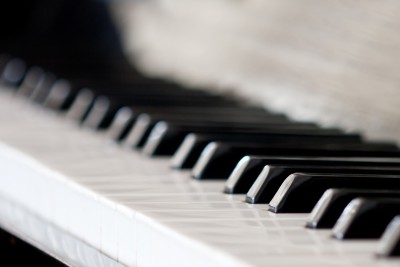Improvisation is the spontaneous creation of music. Depending on the style, there will be various guidelines and boundaries that define what will work, but in all these situations, there are three skills that need to be in balance. All of these can be improved using organized practice methods, as we discussed in this post.
1. Association: This is the mental understanding of the elements involved. I call it association because when it is in place, all the right concepts and ideas are triggered by the musical situation. For example, a chord symbol might cause a bunch of usable, relevant material to appear in our mind. Here are some examples of association:
- Chord-scale relationships: finding the right notes for a given harmonic situation.
- Note names: where they are on the staff and in our instrument.
- Chord tones: the names of the notes in a given chord, and their relationship to the harmony.
- Classic riffs: vocabulary that fits the style. These are gained through transcription.
- Chord function/analysis: what a given chord or chord motion means in the context of the music, such as roman numeral function.
- Reharmonization possibilities: other things that could be played or implied that would make the music interesting. Transcription is key here as well.
- Pattern concepts: groups of notes and intervals that create interesting lines.
- Rhythmic figures; the note values and counting that are part of the music.
To practice association, we need to cause these ideas to appear in our mind at the right time. In this case, it is about what to play and when, rather than how to play. Much like memorizing book knowledge, this requires repeated mental drills until the knowledge “sticks.”
2. Muscle Memory: This is the physical ability to play what you have associated with the musical trigger. Basically muscle memory means to take a bunch of smaller motions and turn them into one flowing gesture. With proper practice these gestures become effortless, or at least reliable. Some important things about muscle memory:
- It is important to practice the things you need. If these gestures don’t fit any musical situation, they won’t be useful, and will occupy too much practice time.
- Muscle memory practice can have a “hypnotizing” effect that will blunt our ability to use our material. Variety is key.
- Excess practice of overly hypothetical technical material without concern for musical application can lead to “chops” without any real vocabulary.
- Precision and control is the goal; slow and careful practice is the key to this.
3. Tonal Memory: This boils down to knowing how the music sounds in your mind. Children can sing songs without any understanding of harmony and with no practice. In the long run, we want this to guide our playing, since this is where we intend the sound and place it in the music. Here is how this is built:
- Active listening and transcription: this will take sounds and attach a name and understanding of what is going on. Our ear will memorize the sound.
- Practicing logical and appropriate material in context. I can’t count the times I have found myself singing the things I have been practicing.
- Digging into material that is new and outside our comfort zone: this will open our ears to new sensations and expand our ability to recognize musical elements.
- Rhythmic reading and improvisation will improve when we memorize the sounds of various rhythmic figures. It is not possible to read rhythms one note at a time.
Putting it together
When these three skills are in balance, we respond to a musical situation with relevant material that we can place confidently, knowing we can execute it comfortably, and with the ability to understand and intend the sound. If any one of these things is missing from the equation, we will experience frustration:
- Muscle memory without association or tonal memory will lead to a “fishing expedition” where we have no idea if what we play will fit, or how it will sound (mindless “shredding”)
- Association without the playing skill will mean we can understand the music, but we will be frustrated, since our playing won’t keep up with our ideas.
- Tonal memory without the guidance of the right material will lead us to hear the same things over and over, without variety. Introducing our ear to new sounds and practicing them will help.
Questions:
How do you prepare to improvise? Are any of these elements weaker than the others for you?

I’ve never seen any articles on this topic so helpful, well structured, compact and comprehensive, and with that touch of informational approach (again). I wish I’d read this article when I was little. Thank you so much, Randy! Please keep us posted!